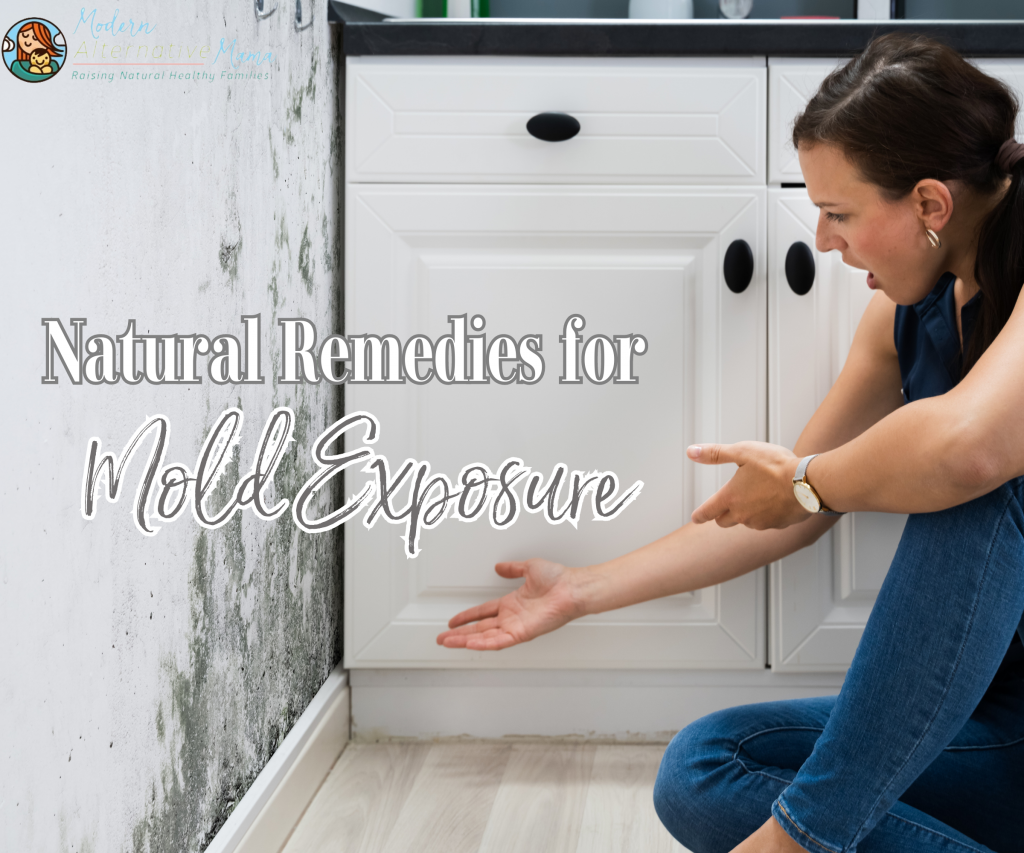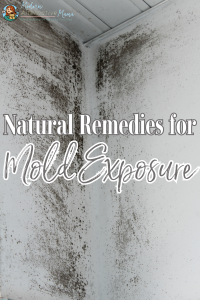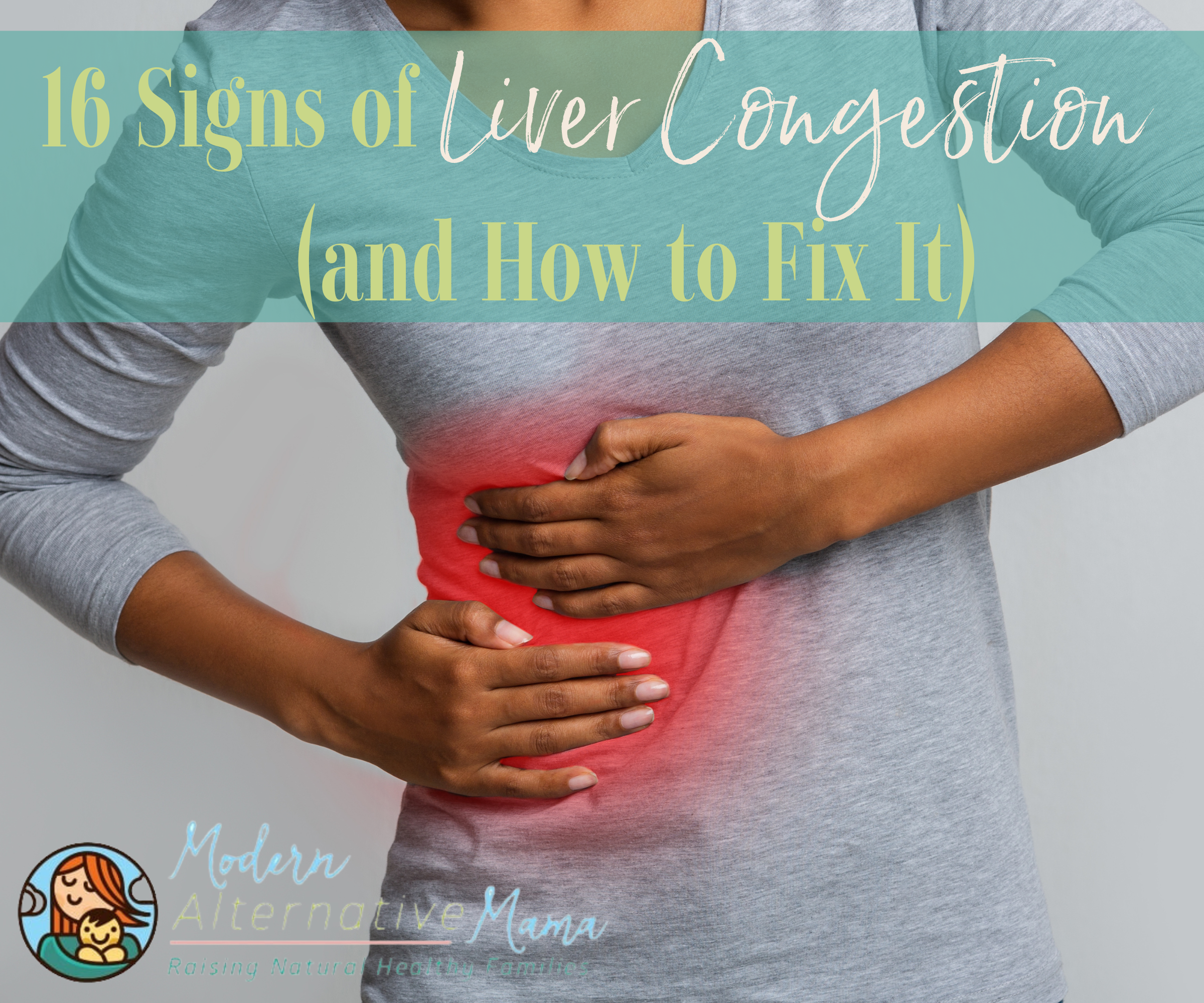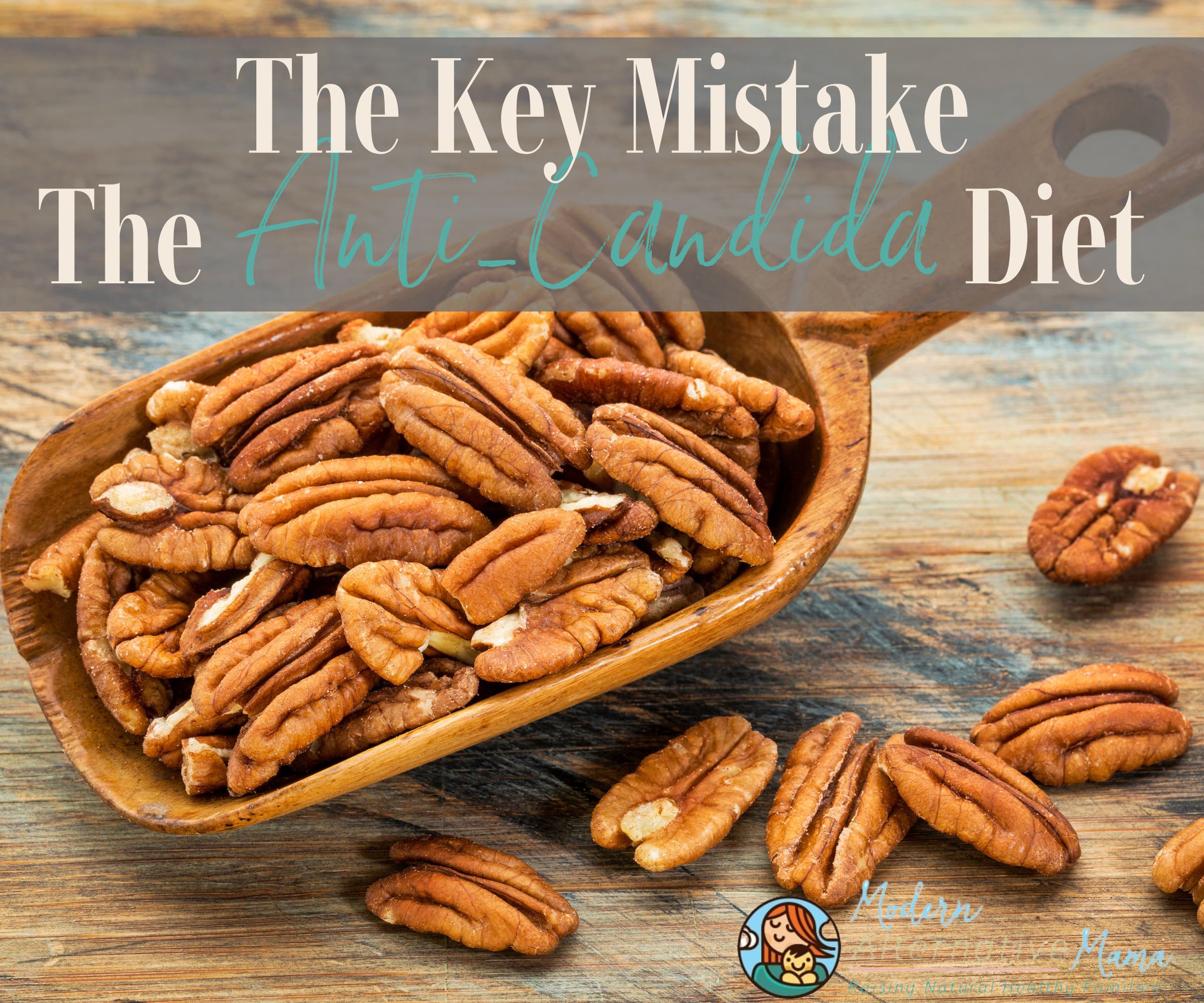In 2020, I stopped taking all of my medications; this included my medication for controlling my chronic migraines. When I gave up all pharmaceutical drugs, I anticipated I would suffer from migraines. After all, my 23andMe DNA results said I was predisposed to migraines, and I’ve dealt with debilitating migraines since my teenage years.
Upon discontinuing my medications, I started getting debilitating migraines that would last days. I would go to sleep with them and wake up with them. I would try all my natural remedies with absolutely no success most days. When my remedies worked, I covered the symptoms, never fixing the underlying problem because I didn’t know what it was.
One day, while showering, I got soap in my eye. As I turned to face the water stream to rinse the soap out, I looked up and noticed black patches on the ceiling. I didn’t realize black mold was growing on my bathroom ceiling. I showered but never really looked above the showerhead, as I typically showered facing the opposite direction.
After my shower, I looked up symptoms of black mold, and there it was: I was definitely dealing with mold exposure. I honestly have no clue how long I was exposed to black mold, but I am sure the 26 medications I was previously on helped to mask the symptoms.
What is Mold Exposure
According to Dr. Scott Jamison, approximately 5-10 million people in the United States have mold toxicity (1). Mold exposure is when someone comes in contact with or breathes in the air (spores) of a damp and moldy environment. Depending on a person’s sensitivity level, these environments can cause detrimental health effects, including mold toxicity (2). Some symptoms of mold exposure include (3):
- Sneezing
- Nasal congestion
- Runny nose
- Eye irritation
- Coughing
- Sore throat
- Skin rash
- Headaches
- Lung irritation
- Wheezing
You may be at higher risk for complications after mold exposure if you have certain medical conditions such as (3):
- Allergies
- Asthma
- Chronic obstructive pulmonary disorder (COPD)
- A compromised immune system
- Cystic fibrosis
If you suspect you’re dealing with mold exposure, you could take a self-assessment like Dr. Lam’s Visual Contrast Sensitivity Test. This 10-15-minute test is a series of 45 images with decreasing contrast with each image. You choose whether the lines in the images point left, right, or up. You can also say you can’t see the image.
Aside from the symptoms associated with mold exposure, there are also some signs of mold in your home you could look out for. Aside from the obvious visible mold like colorful, green, or black specks is, of course, a clear sign of a mold issue, other signs could be (4):
- Visible discoloration or staining, such as grey, black, green, or bluish specks along grout lines, on walls, or other surfaces, is most likely mold.
- Any musty, earthy, or sour smells throughout a room or area indicate mold is present, even if there are no visible signs.
- Damp walls, upholstery, floor, or cabinetry are signs of high humidity or moisture in the home and breeding grounds for mold.
- Leaky plumbing, especially slow leaks, can add enough moisture to encourage mold growth.
- Moisture condensation, such as water droplets on walls, windows, windowsills, or around refrigerator, freezer, or air conditioner coils, is also a breeding ground for mold.
- Clothes in the washing machine quickly start smelling musty, earthy, or sour is a sign of mold in the washing machine.
- Clutter and crumbs left on the floor or hidden under sofas.
If you notice any of these signs of mold in your home, consider buying a mold testing kit to verify the mold status of your home. Knowing the mold status of your home will help you take the appropriate measures to protect yourself and your family from mold exposure and toxicity.
Natural Remedies for Mold Exposure
There are many different symptoms associated with mold exposure. The best way to deal with mold exposure, in my experience, is to, of course, find and tackle the mold problem. Unfortunately, you cannot expect to feel better if you’re still exposed to the problem. After removing or killing the mold in your home (or moving if it’s bad enough), you can address each symptom while detoxing and supporting your entire body post-exposure. So let’s get to it.
Addressing Nasal Discomforts
Congestion occurs when the nasal cavity, adjacent tissues, and blood vessels become swollen with excess fluid, causing a stuffy or plugged feeling, often referred to as a stuffy nose (5). Contrarily, a runny nose is when the excess fluid drips or runs out of the nose, down the back of the throat, or both (6). Both of these symptoms can occur when struggling with mold exposure, but some herbs can help, like elderberry and nettle.
Elderberries may support the immune system. The immune system protects the body from outside invaders, such as bacteria, viruses, fungi, and other toxins (7). When you support your immune system, you potentially support your body’s ability to fight off sicknesses such as mold exposure. One study found that the elderberry polyphenols helped the rat’s immune defense by increasing the number of white blood cells (8). Additionally, elderberry’s quercetin content supports the body’s histamine response, which further supports the immune system (9).
Nettle has anti-inflammatory properties. In one animal study, results suggest that a portion of the anti-inflammatory effect of nettle extract may be attributed to its inhibitory effect on NF-kappaB activation (part of the immune system responsible for inflammation development) (10). Nettle also reduced levels of numerous inflammatory hormones by interfering with their production in vitro (11).
Other options for these symptoms include using a facial steamer, a neti pot (I like using marshmallow root in the neti pot), and products like Earthley’s Sinus Saver and Breathe Well Salve. We also have some information on massages for nasal drainage available in our DIY: Lymphatic Massage.
Addressing Headaches
Headaches are common when dealing with mold exposure. The best way to approach a headache is to tackle inflammation. Inflammation is the body’s way of healing and fighting off infections, but chronic inflammation can cause serious problems (12). Aside from the elderberry and nettle, which I’ve already discussed, two fantastic herbs are peppermint and ginger.
Peppermint has anti-inflammatory properties (13) and helps relieve headaches and migraines thanks to its cooling sensation (14). Peppermint’s ability to relieve certain headaches is likely due to the menthol in peppermint oil. Menthol increases the blood’s flow and provides a cooling sensation that assists in easing pain (15). In one clinical study of 35 people with migraines, when participants applied peppermint oil to the forehead and temples, the pain was reduced significantly after two hours compared to a placebo oil (16). In another study of 41 people, when participants applied peppermint oil topically to the forehead, they found it to be as effective for headaches as 1,000 mg of liver and kidney-damaging acetaminophen (17).
Ginger has an active constituent called gingerol, which is most studied in ginger (18). Gingerol has many known medicinal properties and a long history in traditional and alternative medicine. In studies, 250 mg of ginger was as effective as sumatriptan in reducing migraine pain. Ginger also poses fewer side effects than sumatriptan, making it a safer alternative (19). Ginger works similarly to a class of prescription medications called triptans, which increases serotonin, a chemical messenger involved with migraine attacks, which is believed to help stop migraine by reducing inflammation and restricting blood vessels.
Of course, Eathley offers some amazing products to help with these discomforts, such as Earthley’s Ginger Root Capsules, Pain Potion, and Anti-Inflammatory. I also find that using the facial steamer and neti pot from the previous section helps tremendously with these symptoms.
Addressing Sore Throat
Usually, when we experience a sore throat, the first course of action is to take a cough drop, but let’s face it, most of them are brimming with toxic ingredients. Addressing a sore throat without mainstream solutions is pretty simple. You could start with homemade natural remedies like gargling salt water, Cough and Cold Lozenges, or Healthy Lungs Tea, but keep reading if DIYs, mullein, and lemon balm are excellent natural options to soothe a sore throat.
Mullein has been used for centuries to help coughs, bronchitis, asthma, and just about every respiratory issue under the sun. Mullein was traditionally used for tuberculosis (20). The flowers and leaves contain saponins that help rid the body of phlegm and mucilage, which soothes irritated membranes. Mullein loosens and removes excess mucus in the respiratory system while helping reduce inflammation, relax muscles, and relieve congestion (21). All great properties to help soothe a sore throat.
Lemon balm has demonstrated antibacterial properties in tested samples against Staphylococcus aureus and Pseudomonas aeruginosa (22). Lemon balm has the potential to act as an anti-inflammatory agent (23), which can help relieve the pain of a sore throat
Why not opt for something less dangerous than mainstream cough drops, like Earthley’s Herbal Throat Spray? Herbal Throat Spray provides relief from sore throats without compromising ingredients. This spray is infused with anti-viral herbs and has a pleasant, sweet flavor. Banish sore throats naturally with cooling peppermint while your immune system gets the support it needs.
Addressing Cough & Wheezing
Mainstream cough medicines like Dextromethorphan (DXM) have a long list of side effects. We commonly hear about drowsiness, but it can also cause seizures. Not to mention regular abuse of DXM at high doses can lead to chemical psychosis (24). Other options include herbs like fenugreek and dandelion.
Fenugreek helps maintain mucus conditions in the body (mainly in the lungs) by helping to clear congestion and acts as a throat cleanser and mucus solvent easing the urge to cough (25). These benefits are why fenugreek is commonly used to aid asthma symptoms (26). Fenugreek also helps relieve pain and has antioxidant and anti-inflammatory properties (27,28), which can significantly impact recovery from pneumonia.
Dandelions aren’t just a weed in your backyard. In traditional herbal medicine, dandelions are widely acknowledged for their many medicinal properties, like antioxidant and anti-inflammatory properties (29,30). In animal studies, dandelion extract relaxes airway muscles, inhibits bronchial muscle contractions, and relieves the respiratory resistance of healthy and asthmatic mice (31).
Why not opt for something less dangerous than DXM, like Earthley’s Cough-B-Gone, which has all three of these herbs? Cough-B-Gone is an herbal tincture created to help relieve colds, coughs, and congestion. This tincture combines herbs like mullein leaf, fenugreek seed, and dandelion root to nourish your body and support the respiratory system.
Addressing Skin Rashes
When exposed to mold, some people develop dry, itchy, or scaly skin when mold spores come into contact with the skin (this is most common in those with mold allergies). Those extremely sensitive to mold may develop atopic dermatitis or eczema (32). When this happens, you could make a natural remedy like Homemade Healing Salve or Calendula Salve. Another option would be herbs like comfrey and calendula.
Comfrey has been used for over 2,000 years to treat various ailments. Comfrey is widely known for its anti-inflammatory properties (33). Comfrey has demonstrated antimicrobial and antifungal effects in several studies (34,35). So it’s no wonder comfrey is a great herb for wound healing. One study showed that comfrey could help heal abrasion wounds (36). Another study demonstrated topical application of comfrey cream led to a quicker regeneration of skin cells within 4–7 days (37).
Calendula has been used internally and topically for centuries to heal wounds, burns, and rashes. For instance, a test-tube study determined that calendula extract increased the amount of collagen in wounds as they healed, which is necessary to form new skin (38). In animal studies, rats treated within an eight-day window had a 90 percent closure of their wounds, compared to only 51 percent of those who had not used the plant-based topical treatment (39). Additionally, calendula’s antioxidant content reduces skin damage caused by oxidative stress and has anti-aging properties that may improve skin health (40,41).
Of course, if you don’t have these herbs on hand and DIY projects aren’t your thing, you could always opt for something like Earthley’s Anti-Itch Soap or All-Purpose Salve.
Disclaimer: This post is not intended as medical advice. These statements have not been evaluated by the FDA, and nothing in this post is intended to diagnose, treat, or cure anything. If you have questions, please do your own research or seek advice from a health professional.






This is very informative! Thank you for sharing~
Thank you for this post. My family is currently struggling with mold in military housing and feeling the effects. I am looking forward to implementing these remedies!
I am so sorry you are dealing with mold issues, especially being in service housing. Thank you so much for your family’s sacrifice, dedication, and service. I hope the remedies work well for you all!
this covers SO much, it deserves a round of applause! thank you for sharing this wealth of knowledge. dealing with this now